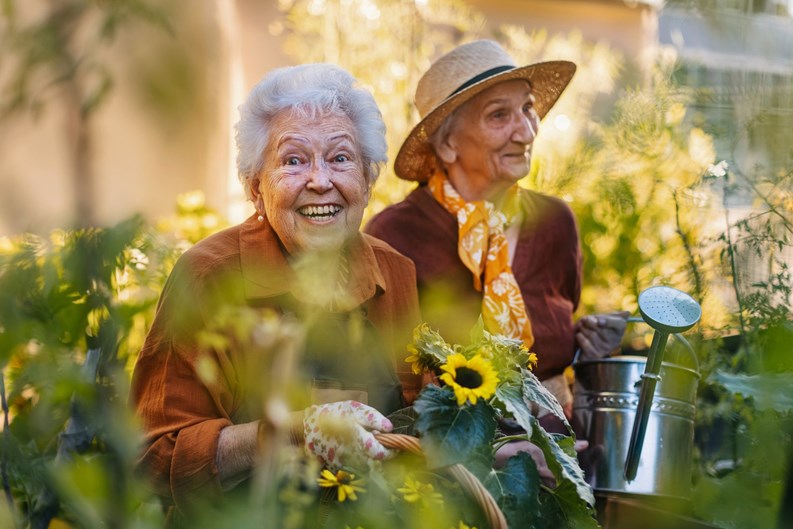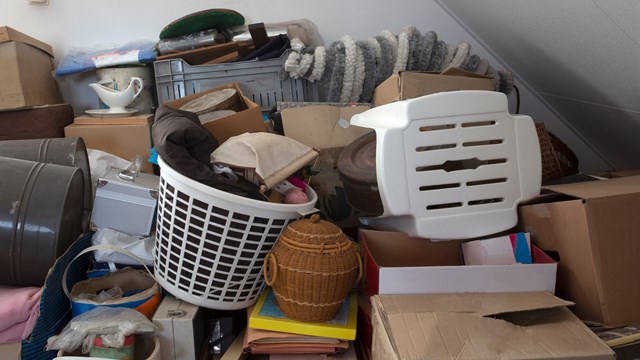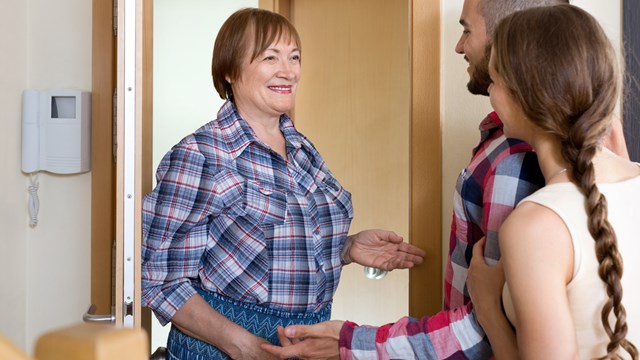Homeownership is a long-term commitment for most. In the context of a multifamily community like a condo or co-op, it’s not unusual for many owners and shareholders in the building to have purchased their units around the same time in early adulthood or middle age, raised their families there, and stayed put after the kids have launched. In cases where aging-in-place senior residents make up a majority of the building or HOA’s population the property becomes what’s known as a naturally occurring retirement community, or NORC.
The more common scenario is for the aging segment of a building’s population to represent a significant minority - one with its own needs and challenges, which often require some special consideration and accommodation from boards and managers.
According to Susan Birenbaum, LCSW, a New York-based therapist whose firm offers co-op/condo advisory and psychotherapy for aging adults and their families, many of the residents who purchased their co-op or condo units during the initial wave of conversions in the late-1900s were young, relatively healthy adults with jobs and families. “Forty years later,” says Birenbaum, “that cohort of original shareholders are in their 70s, 80s, and 90s, still living in the same apartment that they bought back in the 80s. Many are now widows or widowers, and are living alone, along with those who never married. If they have children, often those children have moved away and are involved with their own life, work, children, etc.”
Unique Challenges
Birenbaum goes on to note that as this cohort of residents has aged, “It’s of course more common for them to live with health challenges [and] illnesses ranging from heart problems to diabetes to mobility limitations, cognitive decline and dementia. Day-to-day housekeeping tasks may be neglected as their ability to manage cleaning deteriorates. There are other behavioral changes that can be a nuisance at best, and a hazard to the resident and neighbors alike at worst; individuals who used to keep a neat apartment may exhibit hoarding behaviors, creating problems with odors, pests, and clutter–as well as a fire hazard for the whole building, and dangerous conditions for emergency personnel who may need to enter their apartment during a crisis. Residents with dementia may also leave the gas on, or candles unattended, or may smoke in bed, which again puts them and their building at risk.” They also may exhibit troubling behaviors, such as wandering public areas of the building in inappropriate clothing, shouting, or harassing neighbors and staff. “While these outbursts may not present a physical danger,” says Birenbaum, “they are certainly disruptive, and can be upsetting for everyone involved, including the resident him–or herself.”
Respect Your Elders
When an older neighbor is struggling with one or more of these issues, what responsibility – moral, legal or otherwise – do co-op, condo, and HOA communities have toward that community member? Is that responsibility different in any way from the rest of the resident population?
In short, no, says William McCracken, a partner with New York City-based law firm Moritt Hock & Hamroff. That being said, “By law, every building should be equipped to handle the needs of elderly and disabled residents. Therefore, it helps to know the building population well enough to cater to specific needs and issues. It’s also useful for the building managers to be familiar with social service programs available to residents in their particular area, and to have ongoing working relationships with the people running them.”
Matthew Gains, a partner at Marcus, Errico, Emmer & Brooks, a law firm located in Braintree, Massachusetts, elaborates; “The short answer is that condo communities that have an elderly population by default are not nursing homes or assisted living facilities,” he says. “They are still condominium associations. They are not and should not become the caretakers for these people. To be fair, on the other hand the board and the property’s management want to maintain a harmonious community. That harmony would include protection, wellness, and safety for residents. Therefore, there are things they must do that other condo communities with a younger residency might not.”
Birenbaum concurs. “Empathetic as employees may be toward people they’ve known for years - even decades - as nice neighbors, it is not their responsibility to care for the shareholder.”
So, while there is no concrete legal obligation for boards to provide special consideration to elderly residents outside of those required under laws such as the Americans with Disabilities Act (ADA), there is a moral imperative to show care and concern for one’s neighbors and constituents.
Practical Matters Matter
An example of that care and concern is helping older residents cope with maintenance or repair projects that may impact their daily lives more profoundly than that of their younger or more able-bodied neighbors. Even from a purely practical point of view, communities, boards, and their managers need to take the needs of elderly residents into consideration when planning maintenance work or larger capital projects that might disrupt daily life for all residents, but that could represent major hardships for those who are elderly and/or have mobility challenges.
For instance, during the replacement of the single elevator in the author’s own building, neighbors organized to help ease the impact of the six-week project on the approximately 10 elderly residents in the building. Chairs were placed at the landings next to the stairs on each floor to provide a break for those climbing to reach higher floors. A committee of neighbors also organized daily shopping trips on behalf of older residents who might have a hard time getting to and from the market. While the elevator replacement was difficult for these elderly shareholders, the care and consideration given by their neighbors was of critical importance in getting through the project.
In another example, McCracken relates that “My own building’s lobby is two steps below grade. We’re now in the process of getting approval to install a ramp up to sidewalk level. This being New York City, that’s much easier said than done, but it’s the sort of physical modification that, while not strictly legally required, would better serve the needs of our aging and disabled residents.”
Setting a Workable Policy
There are many angles for boards and management to consider even when setting unofficial policy with regard to elderly residents. Policies must be fair and must not cross lines of liability and responsibility. And the issues go beyond access and mobility. One resident of a condominium complex in south Florida with a diverse range of ages told CooperatorNews that they have a group of resident volunteers who go door-to-door to check on elderly neighbors every day after 10 a.m. If a resident doesn’t respond, management is alerted to do a more thorough wellness check on the resident to make sure everything is okay.
More than just a matter of policy, paying attention to sudden absences, or changes in an older resident’s usual routine is just good neighborliness—and can even save lives. Dan Wollman, the CEO of Gumley-Haft, a real estate management firm in Manhattan, says, “I have a building I manage where one of the residents wasn’t seen for a couple of days. After three days, the super called and the neighbors checked - turns out the resident was very ill and needed help. It was definitely a good thing they checked.”
That being said, Wollman goes on to note that “We need to keep in mind that a [condo or co-op] building isn’t a nursing home. We’re not an assisted living facility, either. The sad truth is that it’s not our job. On the human side, we want to be thoughtful and check in on them because we want to build community, because community is what shared interest living is about - but we simply don’t have the mechanism to check in on all elderly residents every day. So there has to be some balance between the two. It can’t all be left up to the building staff. They aren’t trained care professionals, and it’s not what we pay them to do. It’s a very complicated issue.”
Birenbaum concurs. “Often the board, managing agent (if there is one) and the co-op’s legal advisors don’t know what to do in order to support the residents and get them the help they need,” she says. “They may decide to write a letter to the resident and/or reach out to family members if there are any, outlining the situation and setting a remediation period, after which the shareholder’s lease may be revoked, if the problematic behavior or conditions have not been sufficiently addressed. They may also consider contacting Adult Protective Services (APS)—a move that can have mixed results.”
But there’s still a lot that managers, boards, and resident volunteers can do to proactively support and include their building or association’s older residents, says Michael Valenti, senior vice president at Briggs, a real estate management firm located in Boston. “Supporting older and elderly shareholders and owners in a community is vital for fostering an inclusive and compassionate environment,” he notes. “Boards can help by developing inclusive policies that consider the needs of older residents, ensuring they have a voice in the community; managers can play a crucial role in this by organizing events like tech support sessions to help older residents learn to use smartphones, computers, and other devices. They can also make sure they provide important community information in multiple formats to accommodate different peoples’ preferences. Neighbors can foster a culture of neighborliness by checking in on older residents, offering help with groceries, and inviting them to community events. By combining efforts from managers, boards, and neighbors, communities can create a supportive environment for older and elderly residents, fostering strong social connections to enhance their quality of life.”
Do’s, Don’ts, & Other Considerations
According to Wollman, one simple but vital tool for managing on behalf of elderly community members is a list of residents “who might be infirm, or need help, or are otherwise challenged, so that in an emergency we know which apartments they’re in. If there’s a fire, or we need to evacuate for some other reason, the list is at the front desk, and lets us know which apartments to go to immediately to get those residents out.”
Valenti also advises boards and managers to “Comport with the written governance and ADA-compliant regulations when reasonable accommodation requests [for a ramp, special signage, etc.] are received. Do not operate outside of the entities’ purpose and create potential liability for your association. Additionally, if your association decides to proactively modify your grounds for an aging population, be sure you do so under the guidance and advice of an ADA professional.”
Every building is different, and older people are certainly not a monolith; if your building does have a large number of older residents, do recognize that this fact will affect how they feel about a whole host of issues, from building amenity spaces to accessibility to capital assessments to trust transfer policies. In some cases, “Board-management teams may consider enlisting the expertise of a clinical social worker or psychologist to come in, assess the situation, interview the parties involved, and collaborate with the building’s administration and legal counsel to formulate an appropriate action plan for supporting the aging resident,” says Birenbaum..
“I don’t think there’s one ‘right’ way to deal with an aging building population,” says McCracken, “except to approach them with intelligence and sensitivity. Age is a protected class in New York housing, so boards need to be careful not to act in ways that will have disproportionately negative effects on older residents, much less with any animus towards those groups.”
Boards and managers must consider many issues, some legal, some ethical, when addressing issues related to elderly residents. Fundamentally though, a little kindness goes a long way. “Whether your co-op or condo is home to many senior residents now, or is trending that direction,” says Birenbaum, “it’s important for both boards and managers to realize that there are effective, empathetic alternatives to initiating evictions or other drastic measures when a senior resident is struggling.”
A J Sidransky is a staff writer/reporter with CooperatorNews, and a published novelist. He may be reached at alan@yrinc.com.










Comments
Leave a Comment